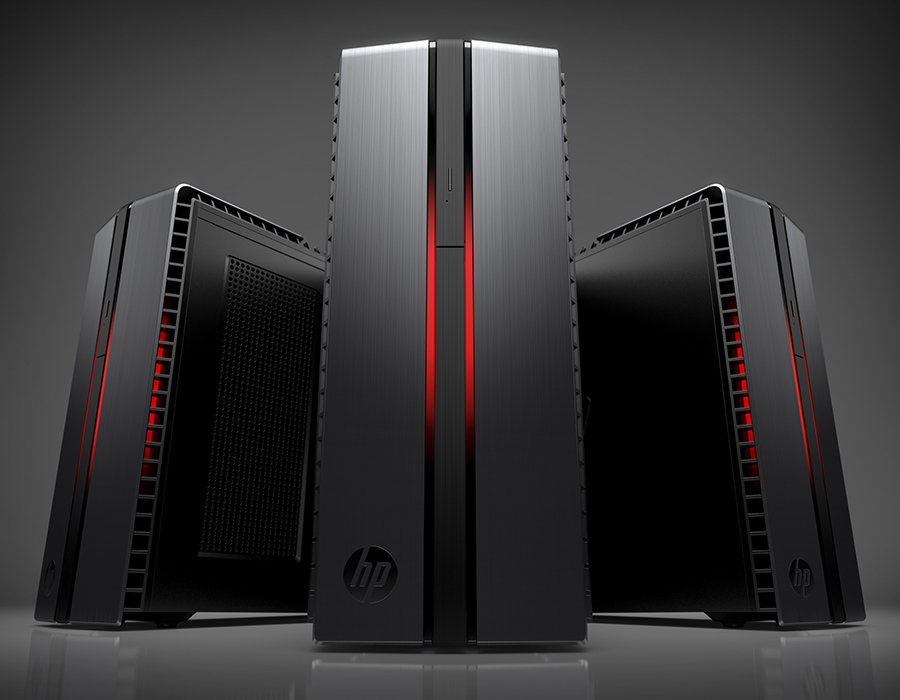HP Announces 'Virtual Reality Certified' Envy Phoenix Desktops
At this year’s CES, it seemed like everywhere you looked there was something related to VR. The show was also notable for being the debut for HTC’s new Vive Pre developer kit and the announcement of the Oculus Rift’s pricing and subsequent opening of pre-orders. Along with the pre-orders, Dell announced Alienware and Dell “Oculus-ready” PC & Rift bundles, both of which are powered by the Nvidia GTX 970 GPU. This tied in nicely to Nvidia’s GeForce GTX VR Ready program (also announced at CES), which identifies VR-capable, Nvidia-powered notebooks and desktops.
What we didn’t see much of at the show was anything from AMD, with regards to any new VR-related announcements from the company and its OEM partners. When we spoke to AMD’s Director of VR, he did say that AMD GPUs would be available options in the “Oculus-ready” bundles, but he did think that OEMs needed to do a better job communicating that.
He reminded us that HP also announced “Virtual Reality Certified” hardware at the show in partnership with HTC instead of Oculus. There are two models, one with an AMD GPU, and the other with a Nvidia GPU. Both models are HP ENVY Phoenix 860 desktops.
Specifications
| Model | HP ENVY Phoenix 860-170VR | HP ENVY Phoenix 860-170VX |
|---|---|---|
| CPU | Intel Core i7-6700K (Skylake) 4.0 GHz w/HP ENVY Liquid Cooling Solution | Intel Core i7-6700K (Skylake) 4.0 GHz w/HP ENVY Liquid Cooling Solution |
| GPU | AMD Radeon R9 390X (8 GB) | NVIDIA GeForce GTX 980Ti (6 GB) |
| RAM | 16 GB DDR4 at 2133MHz | 24 GB DDR4 at 2133MHz |
| Storage | 2TB 7200 rpm SATA Hard Drive | 2TB 7200 rpm SATA Hard Drive |
| Optical | SuperMulti DVD Burner | SuperMulti DVD Burner |
| Wireless Networking | HP Wireless 802.11 a/b/g/n/ac 1x1 with Bluetooth | HP Wireless 802.11 a/b/g/n/ac 1x1 with Bluetooth |
| Power Supply | 600 W | 500 W |
| OS | Windows 10 Home 64-bit | Windows 10 Home 64-bit |
| Price | $1700 | $2000 |
Radeon And GeForce Options
The current ENVY Phoenix is HP’s top-of-the-range gaming desktop, which was released mid-2015 and has now been upgraded with a Skylake CPU. As an ENVY-branded product, it contains VoodooPC DNA (the Canadian boutique PC builder HP bought way back in 2006), which basically means the ENVY systems are HP’s equivalent to Dell’s Alienware brand. The top-end 860 model used for these VR versions has customizable LED lighting that runs down the middle of the brushed metal front of its attractive enclosure. The 860 also offers liquid cooling for the CPU and Bang & Olufsen-tuned audio.
Although these two machines are identified as being “Virtual Reality Certified” rather than only “HTC Vive Certified” on HP’s site, these were introduced as a collaboration between HP and HTC at CES. HP had an ENVY on display connected to a Vive, and these are the first VR-certified PCs that are specifically identified as designed for Valve’s VR offering. The AMD-powered model is also the first VR-certified desktop that we’ve seen using a Radeon rather than a GeForce GPU, and it is interesting that HP decided to make it the cheaper option by using an R9 390X instead of an R9 Fury.
These “purpose-built desktop PCs to power amazing virtual gaming experiences” are more than just a collection of all the right components needed to power the Vive. According to HP, it tested both configurations with the Vive to ensure a plug-and-play experience, and it is also “optimizing driver performance and the power profile” of these ENVYs for VR.
Configured For Vive
Looking at the configurations above and comparing to those of the announced Oculus-ready PCs, you can see that HP is offering higher specification machines with more powerful graphics cards than the GeForce GTX 970s found in the Rift-ready machines. This is probably due to a combination of not being constrained to hit the magic $1,500 all-in (HMD and PC) figure that Oculus announced earlier in 2015, and the fact that it’s likely that the Vive’s minimum requirements are perhaps a little higher than the Rift’s.
Get Tom's Hardware's best news and in-depth reviews, straight to your inbox.
One disappointment is that the prices of the configurations above do include HDDs. However, you can add a 256 GB M.2 PCIe SSD for a reasonable $155. You can also bump up the RAM to a maximum of 32 GB, throw in a few more hard drives, and change the DVD drive to a Blu-ray drive.
The specs of both of these machines do give us a hint as to what the requirements for the HTC Vive will be when it ships in April. Neither HTC or Valve have released any official requirements yet, and back in December, Frontier Developments released the requirements to run Elite Dangerous in VR, and they are similar to those of these models.
More Power Needed Than The Rift?
If the Vive’s minimum requirements are higher than the Rift’s, it could simply just mean that HTC and Valve want users to have better-looking experiences than what the Rift’s min-spec offers, or it could be that room-scale VR does indeed need a little more in the way of horsepower to run. We’ll know soon enough when the Vive goes up for pre-order on February 29 and HTC announces the full specifications.
These “Virtual Reality Certified” HP ENVY PCs can be purchased now on HP’s site and are expected to ship starting mid-February. This gives you plenty of time to set them up before your HTC Vive (or Oculus Rift, because they will, of course, work perfectly fine with the Facebook HMD) arrives in April.




